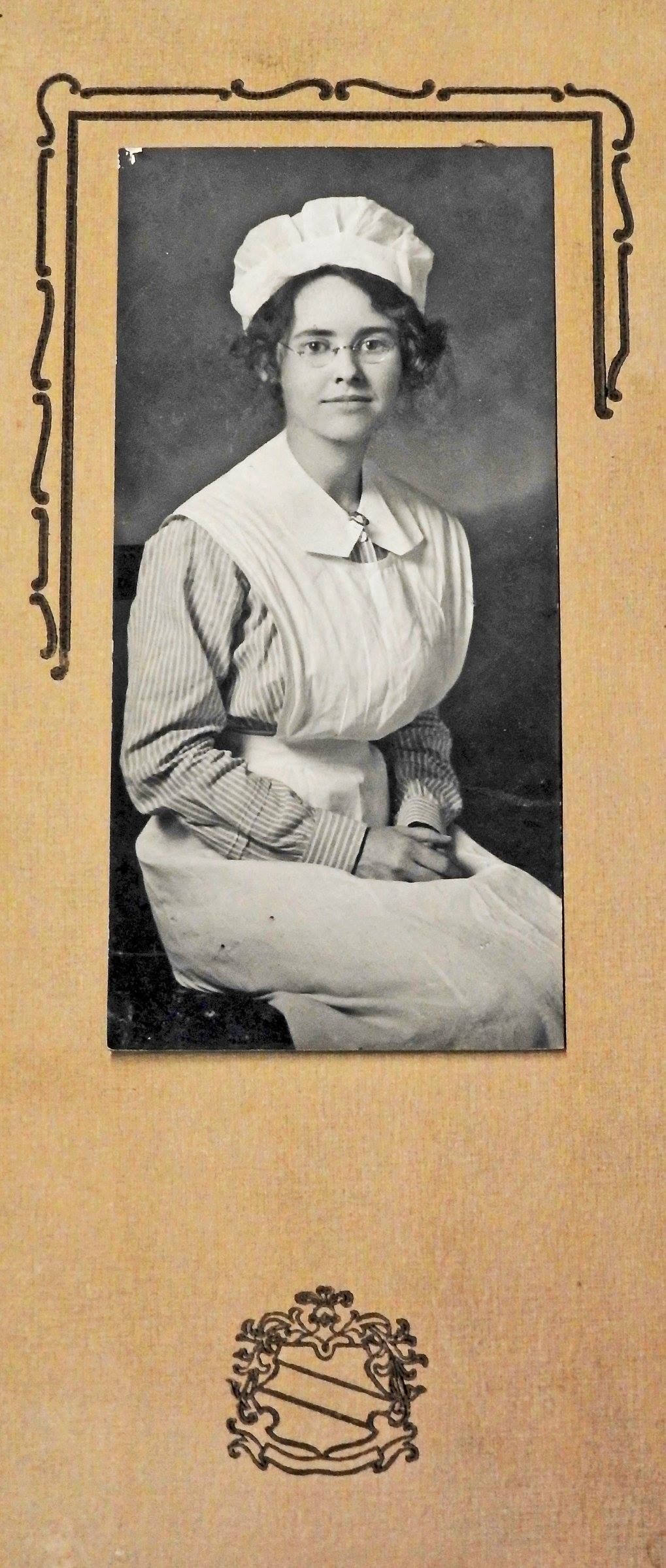
Works Cited"1947: Thomas L. Hickey, Inc. Built the St. Joseph Hospital Addition in South Bend." Tom and Kate Hickey Family History. N.p., n.d. Web. 21 Oct. 2017. Barracks Used during Flu Epidemic in Hospital. 1918. Wilbur Wright Field Photograph 14, United States Air Force Museum, Fairfield Ohio. USAF Museum Collection Bodurtha, Arthur L. History of Miami County, Indiana: A Narrative Account of Its Historical Progress, Its People and Its Principal Interests. N.p.: Bridgeport National Bindery, 2008. 446-48. Print. "Category:Lutetia (ship, 1913)." Category:Lutetia (ship, 1913) - Wikimedia Commons. N.p., n.d. Web. A Corner in Ward Hospital. 1919. Wilbur Wright Field 1919 (photo 4), United States Air Force Museum, Fairfield Ohio. From USAF Museum, Fairfield Ohio Death Certificate. 5 Feb. 1965. Katherine Batig. Indiana State Board of Health, Cass County Indiana. Digital image. (https://familysearch.org/ark:/61903/1:1:MK53-KKW : Accessed 8 October 2017), John J Kreutzer, Peru Ward 3, Miami, Indiana, United States; Citing Enumeration District (ED) ED 129, Sheet 6A, Family 134, NARA Microfilm Publication T624 (Washington D.C.: National Archives and Records Administration, 1982), Roll 371; FHL Microfilm 1,374,384. N.p., n.d. Web. Digital image. "United States Census, 1860", Database with Images, FamilySearch (https://familysearch.org/ark:/61903/1:1:M4NT-PBY), John J Kreutzer in Entry for Jacob Kreutzer, 1860. N.p., n.d. Web. Digital image. "United States Census, 1900," Database with Images, FamilySearch (https://familysearch.org/ark:/61903/1:1:M9MX-YB6 : Accessed 23 September 2017), John J Kreutzer, Peru Township Peru City Ward 3, Miami, Indiana, United States; Citing Enumeration District (ED) 105, Sheet 6A, Family 132, NARA Microfilm Publication T623 (Washington, D.C.: National Archives and Records Administration, 1972.); FHL Microfilm 1,240,393. N.p., n.d. Web. Digital image. "United States Census, 1910," Database with Images, FamilySearch (https://familysearch.org/ark:/61903/1:1:MK53-KKW : Accessed 23 September 2017), John J Kreutzer, Peru Ward 3, Miami, Indiana, United States; Citing Enumeration District (ED) ED 129, Sheet 6A, Family 134, NARA Microfilm Publication T624 (Washington D.C.: National Archives and Records Administration, 1982), Roll 371; FHL Microfilm 1,374,384. N.p., n.d. Web. Digital image. "United States Census, 1920," Database with Images, FamilySearch (https://familysearch.org/ark:/61903/1:1:MF7Y-4W1 : Accessed 23 September 2017), John J Kreutzer, Peru Ward 3, Miami, Indiana, United States; Citing ED 158, Sheet 6A, Line 2, Family 151, NARA Microfilm Publication T625 (Washington D.C.: National Archives and Records Administration, 1992), Roll 441; FHL Microfilm 1,820,441. N.p., n.d. Web. Digital image. "United States Census, 1930," Database with Images, FamilySearch (https://familysearch.org/ark:/61903/1:1:V11T-G72 : Accessed 23 September 2017), James W Batig, Ward 5, South Bend, Portage Township, St. Joseph, Indiana, United States; Citing Enumeration District (ED) 97-66, Sheet 9B, Line 53, Family 191, Sixteenth Census of the United States, 1940, NARA Digital Publication T627. Records of the Bureau of the Census, 1790 - 2007, RG 29. Washington, D.C.: National Archives and Records Administration, 2012, Roll 1135. N.p., n.d. Web. Draft Card For James Batig. N.d. WWII. South Bend Indiana. Grave Stone Photo. 2017. Katherine Rose Batig, Miami County Indiana, n.p. "Home." Davida Michaels. N.p., n.d. Web. 21 Oct. 2017. Http://www.jblearning.com/samples/0763752258/52258_CH02_Roux.pdf. N.d. "James Batig Obituary." Logansport Pharos Tribune [Logansport Indiana] 28 June 1964: n. pag. Print. "Katherine Batig Obituary." Kokomo Morning Times [Kokomo Indiana] 3 May 1965: n. pag. Print. "Katherine Batig Obituary." Logansport Pharos Tribune [Logansport, Indiana] 3 May 1965: n. pag. Print. Katherine Rose Kreutzer. N.d. Family Photos, Miami County Museum, Peru, Indiana. circa 1915 Marriage Record. Digital image. South Bend Area Genealogical Society. N.p., n.d. Web. Nurses Quarters. N.d. Wilbur Wright Field Photograph 13, United States Air Force Museum, Fairfield, Ohio. From the collection at the USAF Museum. “Nursing News and Announcements.” The American Journal of Nursing, Vol. 18, No. 7, 1918, Pp. 567–591. JSTOR, JSTOR, Www.jstor.org/stable/3405699. (n.d.): n. pag. Print. Office of Medical History. N.p., n.d. Web. "Ohio Weather for 1918." Google Books. N.p., n.d. Web. 21 Oct. 2017. "Peru Girl Has Been Assigned Overseas Work." Rochester Weekly Sentinel 29 Aug. 1918: n. pag. Print. Ship List. 1918. US ARMY Passenger List. New York. "St Joseph School Of Nursing Memoir." (n.d.): n. pag. Rpt. in Sisters of the Holy Cross Archives & Records 101 Bertrand Hall – Saint Mary’s Notre Dame, IN 46556 574-284-5781 FAX 574-284-5900. N.p.: n.p., n.d. Print. "United States Army Nurse Corps." Wikipedia. Wikimedia Foundation, 14 Oct. 2017. Web. 21 Oct. 2017. United States, Wilbur Wright Field, and Arthur Wilbourn. “Annual Report.” Annual Report, 1918. From the collection of the USAF Museum "What Did the Nurses Experience in WWI." The Role of Women in Ww1. N.p., n.d. Web. 21 Oct. 2017. "What Was a Typical Day like for First World War Field Nurses?" The History Press. N.p., n.d. Web. 21 Oct. 2017. "World War One: The Many Battles Faced by WW1's Nurses." BBC News. BBC, 02 Apr. 2014. Web. 21 Oct. 2017. Wagner, Nancy O'Brien. Red Cross Women in France During WWI. N.p.: Minnesota Historical Society, 2012. Print. "Red Cross Nurse Sends Letter Home." Peru Journal -[Peru, Indiana] 13 Nov, 1918: n.pag. Print. |
Comments,
submissions and communications may be sent to doughboy@miamicountyinworthremembering.org
|
 |
 |
 |
 |




